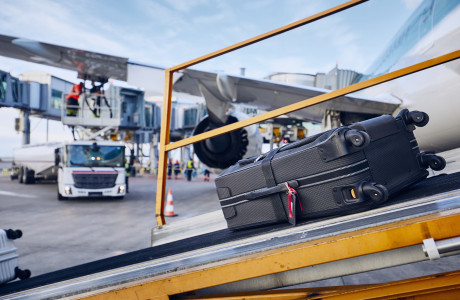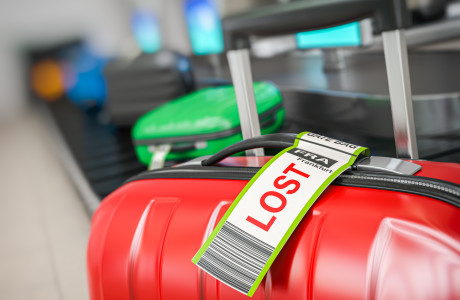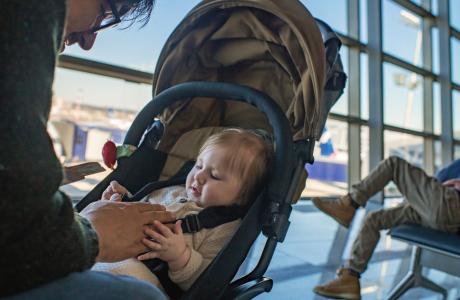
Bulky Baggage: Information & Tips
While most items of baggage can be taken on board an aircraft as hand baggage or handed in at the check-in counter as usual, there are also special rules for some items: This is referred to as bulky baggage. As this term covers a whole range of items - from musical instruments to sports baggage and baby carriages - the exact regulations also differ. Some bulky baggage may even be taken on board and/or is transported free of charge. Here you can read the exact definition of bulky baggage, which regulations must be observed and what costs may be incurred.
Contents
What is bulky baggage?
Bulky baggage - sometimes also referred to as special baggage or sports baggage - is any piece of baggage that is too bulky, too heavy or too large for the normal baggage carousel at baggage check-in. It does not matter what exactly the item of baggage is. However, there are also a number of items that are generally declared as bulky baggage.
Sports baggage: If you want to fly on vacation with your own skis, you will definitely have to check them in as bulky baggage. But tennis rackets, golf clubs, bicycles and paragliders also fall into this category. Water sports enthusiasts with their surfboards, inflatable boats or fishing equipment also often have bulky baggage with them. In short - all sports equipment and gear that cannot be easily transported in normal baggage is bulky baggage.
Musical instruments: If it's not a harmonica in your backpack, but you want to take your guitar with you on the plane, you must check it in as bulky baggage. The same applies to a cello, trumpet or any other musical instrument that cannot simply be stowed in your other luggage.
Children's equipment: Just like the child seat and baby carrier bag, the buggy or baby carriage count as bulky baggage.
By the way: In our magazine, we have compiled guidelines as well as practical tips for flying with a baby.
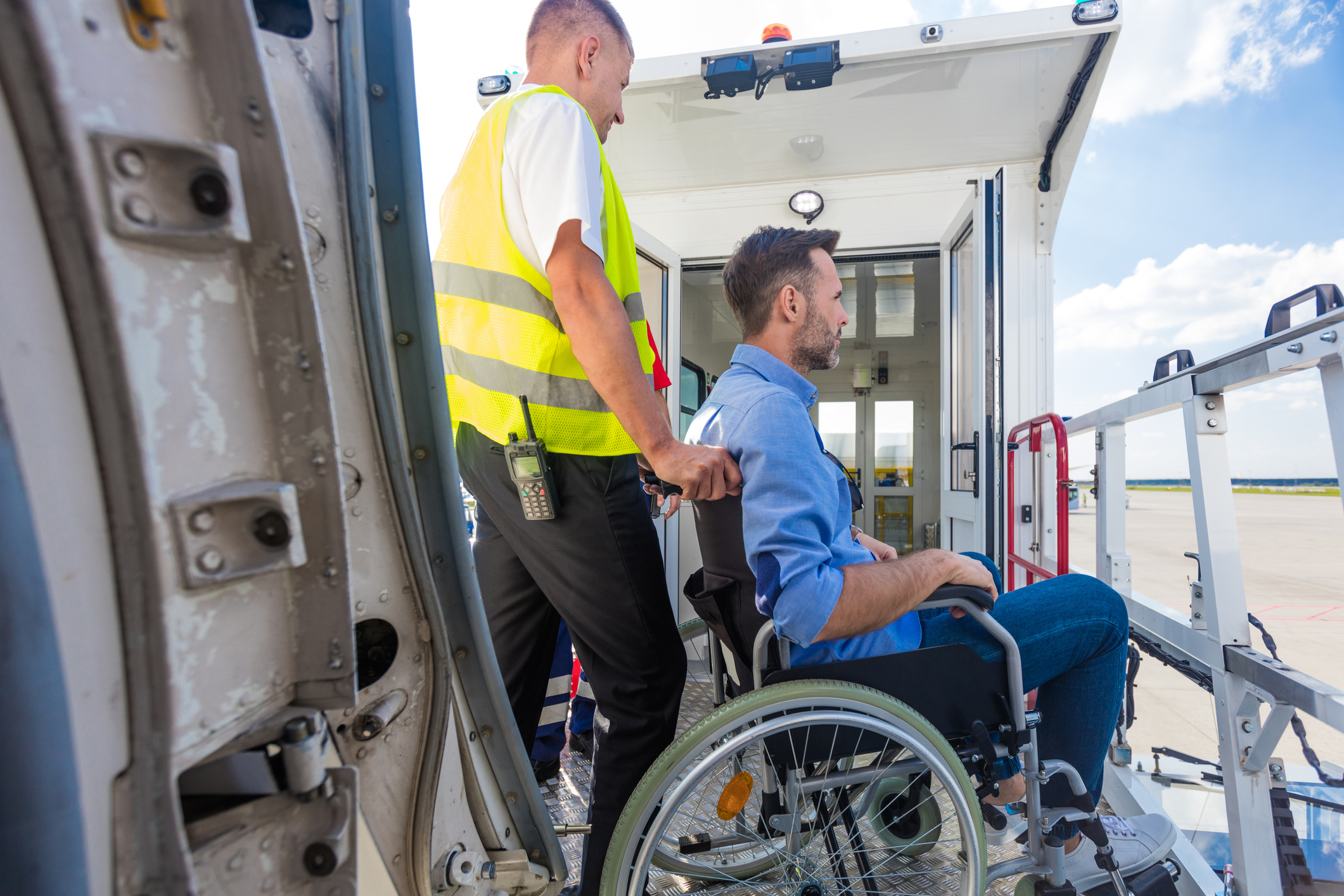 Medical equipment: Some passengers are dependent on medical equipment such as a ventilator or inhaler or a walking aid. Just like a wheelchair, these are considered bulky baggage on the plane.
Medical equipment: Some passengers are dependent on medical equipment such as a ventilator or inhaler or a walking aid. Just like a wheelchair, these are considered bulky baggage on the plane.
Animals: Regardless of the type of animal, they must all be declared as bulky baggage.
Tip: For international flights, make sure you find out in advance about the import requirements for the animal species you are carrying in the destination country.
Dangerous goods: If, for example, you are traveling as a marksman with the appropriate equipment, you must check it in as bulky baggage.
Which bulky baggage can be carried in the cabin?
While it is not a problem if skis are stored in the hold, the situation is very different with an inhaler, a valuable guitar or a cat in a carrier bag. This is why different regulations apply to how bulky baggage is carried. To avoid any unpleasant surprises, you should bear the following things in mind:
Check the airline's guidelines: Almost every airline has individual guidelines on the different types of bulky baggage. Take note of these when you are planning your trip and, if in doubt, ask customer service again. What does not count as bulky baggage with one airline may be classed as bulky baggage with another airline, which may incur additional costs.
Register in advance: Even if some types of bulky baggage are allowed on board, you often still have to register them in advance. Here, too, the guidelines of individual airlines differ, so plan ahead in this respect and make sure that you have registered all items of baggage. This will help you avoid unpleasant surprises at check-in or boarding.
Musical instruments as hand baggage or additional passenger: If you want to take musical instruments with you on the plane, you can often do so in the form of additional hand baggage for an extra charge. For particularly bulky instruments, an additional seat can also be selected if space is available. However, both should be booked in advance.
Essential medical baggage: Of course, you may also take essential items with you in the cabin, but you must also ensure that you inform the airline in advance. Airlines often provide their own space-saving devices for walking aids and wheelchairs in the aircraft, while your personal mobility aids are accepted as bulky baggage at the aircraft door and then loaded into the baggage hold.
Smaller animals: Smaller animals can also be carried on the plane in suitable transport boxes, e.g. cats or small dogs. The requirements for the crates vary, but the important thing is that your pet must remain in it for the entire flight. Some airlines provide their own transport boxes, but check in advance to what extent these meet your own requirements for transporting your pet. Only in rare cases are you allowed to fly with large dogs in the cabin. They are often placed in special boxes in the hold instead. Whether your dog is allowed to fly in the cabin also depends on the breed of dog.
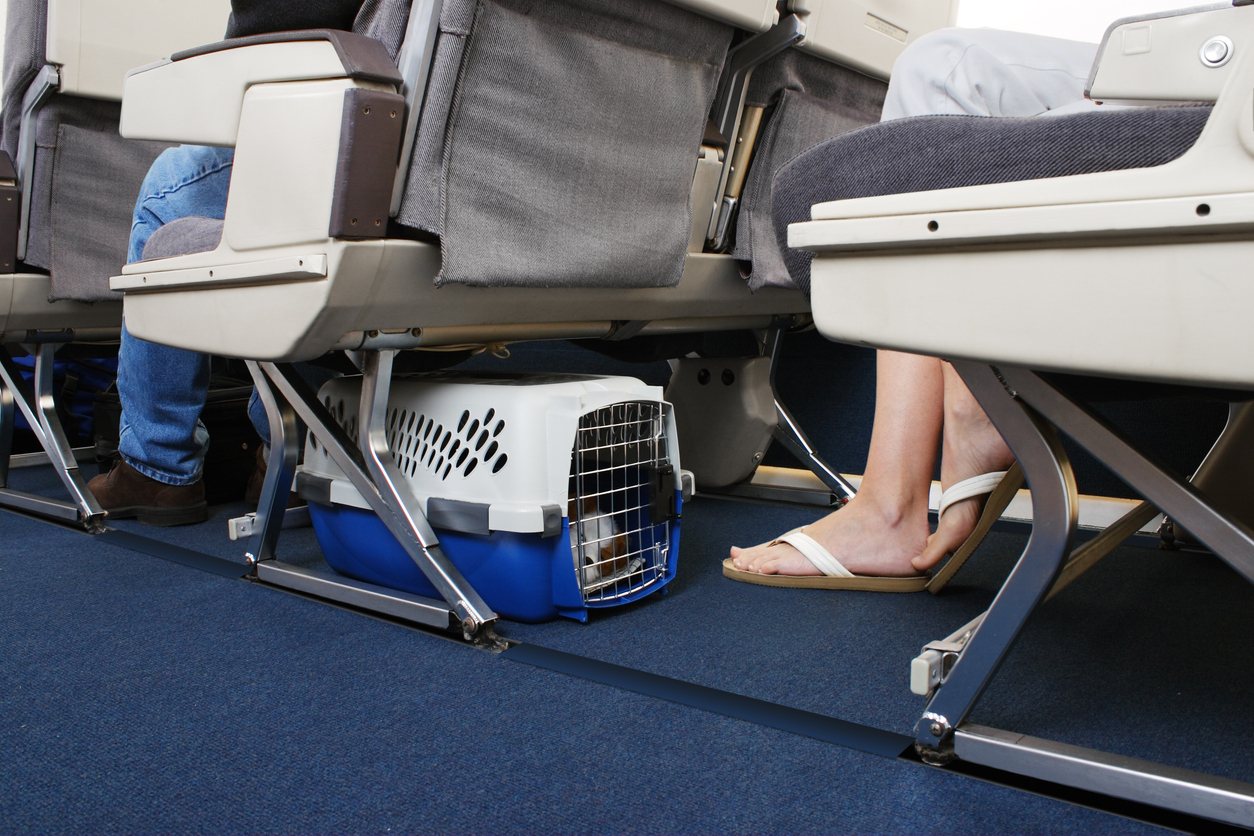 By the way: In our magazine you will find detailed tips and general regulations on flying with dogs.
By the way: In our magazine you will find detailed tips and general regulations on flying with dogs.
As a rule, you are not allowed to take other bulky baggage into the cabin. However, it can sometimes be worth asking the airline staff for advice when checking in your baggage - sometimes, depending on the occupancy of the aircraft, there is also a certain amount of goodwill if you have understandable reasons for wanting to take your bulky baggage with you. However, you cannot rely on this.
What does bulky baggage cost?
The cost of bulky baggage varies from airline to airline. There are no uniform standards. However, as with more common items of baggage, you will generally save costs if you register your bulky baggage in advance instead of checking it in at the airport. You often do not have to pay for medical baggage or children's equipment. Sports equipment can also be free of charge, especially during the season and for certain destinations, such as a flight to a ski resort. On the other hand, the cost of an extra seat for your guitar on the plane, for example, may not be insignificant.
Are there alternatives to bulky baggage on the plane?
Especially if your special baggage on the plane incurs costs, it is worth looking into whether you can send your bulky baggage at a reasonable price instead. Depending on the type of baggage and the flight route, this may well be possible. You should also weigh up how urgently you need the items in question on site. If you do not need the bulky baggage immediately after arrival, sending it by post or parcel service can save you both time at baggage collection and reclaim and money. In addition, it is often more convenient to get to and from the airport without bulky additional baggage.
The golden rule for bulky baggage is therefore to plan ahead and inform yourself in good time - then taking it with you will be stress-free. We wish you a relaxed journey and a safe flight!

